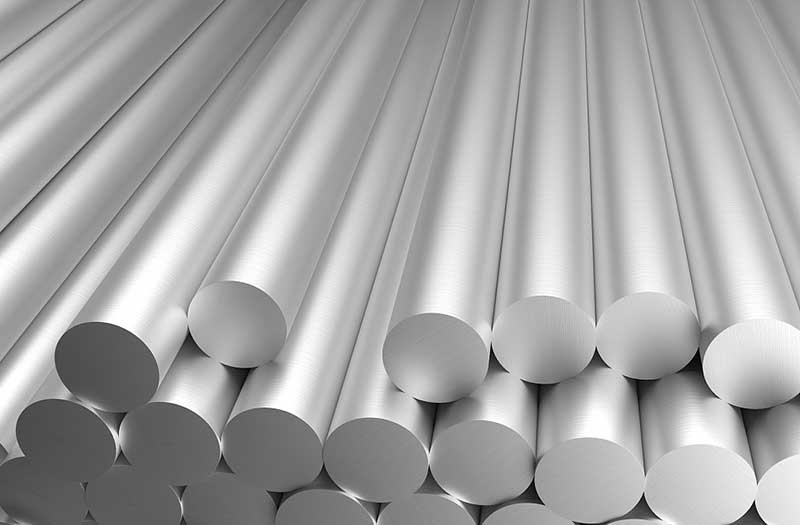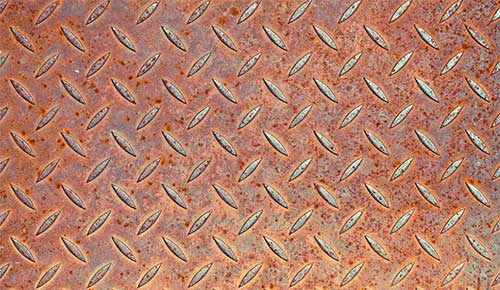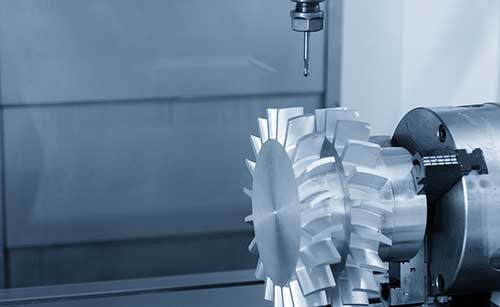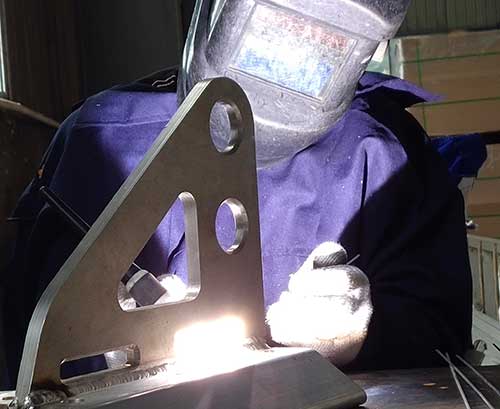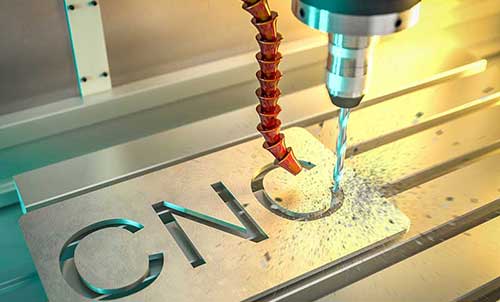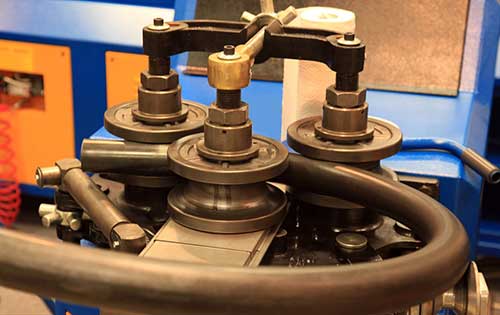6061 Aluminum Alloy – Properties and Uses
The selection of the alloy (alloy is a metal) for the specific end usage determines the success or failure of the project. All alloys are not capable to withstand strict project requirements such as high strength, better conductivity, good corrosion resistance, etc.
This is because these properties vary from alloy to alloy and depend on metallic elements that go into their composition. Therefore, you need to become familiar with the alloy composition, specific properties, and uses.
This article aims to throw light on the 6061 aluminum alloy regarding material properties, material composition, applications, and much more. Sounds interesting! Learn more about 6061 aluminum down below!
6061 Aluminum Alloy – Overview
6061 alloy of aluminum is an alloy that contains magnesium and silicon as primary alloying elements. This alloy is part of the 6000 series. You can also refer to it as “alloy 61s which was first introduced in 1935.
The components made of 6061 aluminum alloy have excellent characteristics such as good weldability, machinability, etc. 6061 aluminum alloy also refers to general purpose alloy.
Uncovering Material Properties of 6061 Aluminum
There are certain properties exist for the 6061 aluminum alloy; uncover the facts in the section below:
Mechanical Properties
The mechanical properties of the 6061 aluminum alloy are:
| Sr. No. | Mechanical Properties | Value (psi / mpa) |
| 1 | Yield Strength | 21000 / 145 |
| 2 | Modulus of elasticity | 10000 / 68.9 Gpa |
| 3 | Tensile Strength | 35000 / 241 |
| 4 | Fatigue Strength | 14000 / 97.9 |
| 5 | Shear Modulus | 3770 ksi / 26 GPa |
| 6 | Ultimate Tensile Strength | 45000 / 310 |
Physical Properties / General Characteristics of 6061 Alloy
The general physical properties of the 6061 aluminum alloy are:
Corrosion Resistance
You can use 6061 alloy of aluminum in highly humid or corrosive environments. This feature contributes to the longer life and durability level of the components.
Machinability
This aluminum alloy supports superior machinability. You can easily shape the alloy using drilling, milling, or tempering. Machineability allows you to achieve intricate and precise details. This is what makes this alloy desirable for multiple applications.
Weldability
6061 alloy is not difficult to weld because it features good weldability/ thermal properties. This way, you can improve the mechanical properties by employing various heat treatment techniques. With zero loss in strength, you can easily weld a variety of shapes. This is why the alloy is best for heat-treated components.
Heat Treatable
6061 aluminum alloy variations including T4/T5/T6 all supports heat treatability. In this process, you can heat the alloy at a particular temperature for a particular time and then subject it to sudden cooling.
It depends on the application for which you want to use the specific variation. For T4, the temperature is 530 degrees Celsius, and for T6, the temperature is 177 degrees Celsius. The overall hardness of the t4 is less than t6, which is why t6 is commonly known as t6 temper.
6061-T4 Vs. 6061-T6 VS 6061-T5
6061-T4 refers to naturally aged alloy, while 6061-t6 aluminum refers to artificially aged. The tensile strength of the T4 is less than that of t6.
Among other characteristics, the notable ones are resistant to corrosion, heat treatable, and excellent toughness. T5 variation possesses hardness that is between the T4 and T6. This makes T5 highly tensile and elongative. Other properties are right in the table below:
| Sr. No. | Property | 6061-T4 | 6061-T6 | 6061-T5 |
| 1 | Temperness | Naturally aged | Artificially aged | T5 |
| 2 | Tensile strength (psi) | 29,000 up to 33,000 | 35,000 up to 40,000 | 40,000 |
| 3 | Yield strength (psi) | 25,000 up to 28,000 | 30,000 up to 35,000 | 32,000 |
| 4 | Elongation (%) | 18 up to 25 | 12 up to 18 | 22 |
| 5 | Hardness | 65 up to 85 | 80 up to 95 | HB 75 |
| 6 | Machinability | Medium | High | Excellent |
| 7 | Weldability | Medium | High | Excellent |
| 8 | Applications | Aircraft, Automotive, Marine | Aircraft, Automotive, Sports Equipment | General extrusions, sheet metal, foil |
Workability
This aluminum alloy possesses good workability. You can form any size and desired shapes with this alloy. The option exists to easily subject this alloy to forging, rolling, or extrusion. This property makes aluminum alloy suitable for manufacturing a wide range of components.
Strength
This alloy has medium to high strength. If you subject this alloy to more tempering/ temper, then the strength increases. Apart from this, corrosion resistance also increases.
Highlighting the Chemical Composition of 6061 Aluminum
Among various manufacturing materials that make up 6061 aluminum, the major alloying elements are magnesium and silicon. Uncover the composition of this alloy in Table 1 below:
| Sr. No. | Composition of 6061 Aluminum (%) | |
| 1 | Al | 96.85 |
| 2 | Mg | 0.9 |
| 3 | Si | 0.7 |
| 4 | Fe | 0.6 |
| 5 | Cu | 0.30 |
| 6 | Chromium | 0.28 |
| 7 | Zn | 0.20 |
| 8 | Ti | 0.10 |
| 9 | Manganese | 0.05 |
| 10 | Others | 0.05 |
Applications of 6061 Aluminum Alloy
Multiple applications exist for this aluminum alloy. Some of the notable ones are:
- Cylinder tube
- Bicycle/Motorcycle/ Automotive
- Roof Structures
- Extruded shapes
- Heat sink
- sturdy structural application
- Architectural
Comparing 6061 Aluminum With Others
6061 Vs. 6063
6063 and 6061 aluminum properties comparison are as follows:
| Sr. No. | Property | 6061 (T4, T6) | 6063 (T4, T6) |
| 1 | Tensile strength (psi) | 29,000 up to 33,000 | 21,000 up to 25,000 |
| 2 | Yield strength (psi) | 25,000 up to 28,000 | 16,000 up to 22,000 |
| 3 | Elongation (%) | 18 up to 25 | 25 up to 35 |
| 4 | Hardness | 65 up to 85 | 50 up to 70 |
| 5 | Machinability | Medium | High |
| 6 | Weldability | Medium | High |
| 7 | Applications | Aircraft, Automotive, Marine | Extrusion, Architectural, Sheet Metal |
6061 Vs. 5052
5052 aluminum alloy comparison with the 6061 is as follows:
| Sr. No. | Property | Alloy 6061 (T4, T6) | 5052 (H32, H34, H38) |
| 1 | Tensile strength (psi) | 29,000 up to 33,000 | 25,000 up to 32,000 |
| 2 | Yield strength (psi) | 25,000 up to 28,000 | 16,000 up to 25,000 |
| 3 | Elongation (%) | 18 up to 25 | 30 up to 40 |
| 4 | Hardness | 65 up to 85 | 50 up to 65 |
| 5 | Machinability | Medium | High |
| 6 | Weldability | Medium | High |
| 7 | Applications | Marine, Aircraft, Automotive | Electrical, Architectural, Food |
6061 Vs. 7075 Aluminum
7075 aluminium vs 6061 properties include:
| Sr. No. | Property | 6061 (T4, T6) | 7075 (T4, T6, T73) |
| 1 | Tensile strength (psi) | 29,000 up to 33,000 | 88,000 up to 95,000 |
| 2 | Yield strength (psi) | 25,000 up to 28,000 | 75,000 up to 85,000 |
| 3 | Elongation (%) | 18 up to 25 | 10 up to 14 |
| 4 | Hardness | 65 up to 85 | 130 up to 150 |
| 5 | Machinability | Medium | High |
| 6 | Weldability | Medium | High |
| 7 | Applications | Marine, Aircraft, Automotive | Aerospace, sports components |
6061 Vs. 2024
Get insight into the comparison of various parameters between the 6061 vs. 22024 aluminium alloy:
| Sr. No. | Property | 6061 (T4, T6) | 2024 (T4, T6, T73) |
| 1 | Tensile strength | 310 MPa | 470 MPa |
| 2 | Yield strength | 270 MPa | 420 MPa |
| 3 | Elongation (%) | 18 | 22 |
| 4 | Hardness | HB 95 | HB 120 |
| 5 | Formability | Medium | Low |
| 6 | Machinability | Good | Better |
| 7 | Weldability | Good | Poor |
| 9 | Corrosion Resistance | Good | Better |
| 0 | Applications | Marine, Aircraft, Automotive | Aerospace, sports components |
Conclusion
To get the most out of your product/component, it is crucial to focus on the selection or choice of the metal or alloy. 6061 aluminum, because of its high hardness, tensile, and yield strength, offers useful applications in marine, automotive and aircraft components manufacturing.
Considering the properties you can use, this allows where you need it without giving a second thought. If you want to get more insights and useful information on various aluminum and its alloys, click here!

